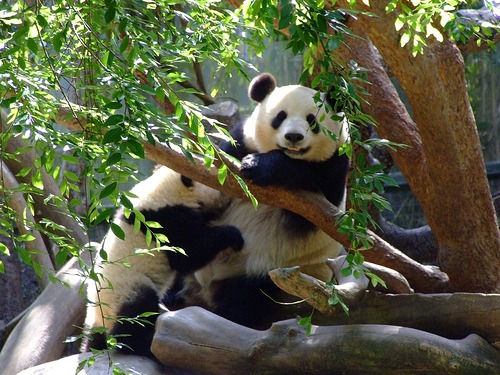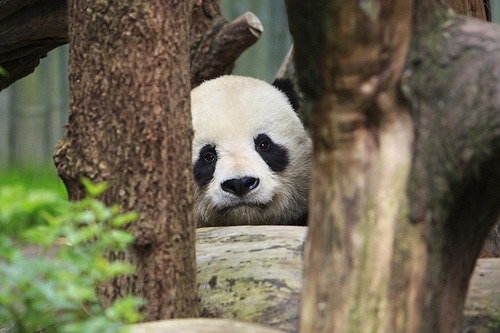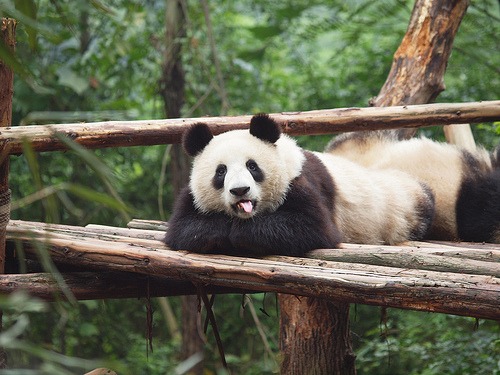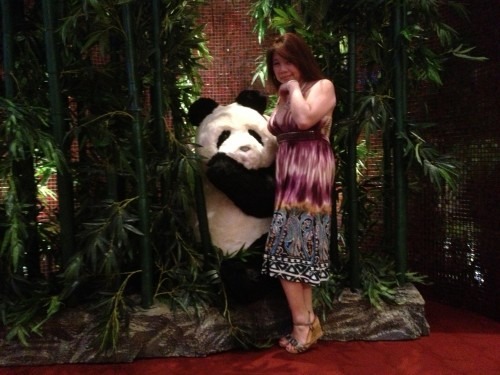The panda, which is also known as panda bear or the giant panda but not to be confused with the red panda, is a bear which lives mainly in bamboo forests high in the mountains of western China, where they subsist almost entirely on bamboo which they can and often do spend half the day eating. The balance consists of other grasses and occasional small rodents or musk deer fawns. It is the rarest member of the bear family with fewer than 1,600 panda bears in the wild left. The panda uses its large molar teeth and strong jaw muscles for crushing the 26 to 84 pounds of bamboo it eats every day which it really has to do considering they can grow up to 330 pounds as adults. That is wild given the fact the newborn panda is about the size of a stick of butter or about 1/900th the size of its mother. The panda bear is an excellent tree-climbers despite its size.
The giant panda is typically black and white with a body typical of bears. Scientists and zoologists do not know why the panda is black and white although many speculate the bold coloring provides good camouflage in their shade dappled snowy and rocky surroundings. The thick, wooly coat of the panda helps keeps it warm in the cool forests of western China. Although the panda bear is super cute it can be as dangerous as any other bear.
Considering there are about 1,600 panda left in the wild while 300 live in zoos and breeding centers around the world, mostly in China, the giant panda is listed as endangered in the World Conservation Union’s (IUCN’s) Red List of Threatened Species.
Chinese scientists have reported zoo pandas as old as 35 though they are not entirely sure how long they live in the wild as it is rather secretive and elusive. The panda is generally a solitary animal and their offspring stay with the mother from one and a half to three years. It is a lot of work to raise a panda cub. Cubs do not open their eyes until they are six to eight weeks old and are not mobile until three months unlike many other baby animals that must learn to walk right away. A cub may nurse for eight to nine months. A cub is nutritionally weaned at one year, but not socially weaned for up to two years.
Not everyone has always thought the panda to be one of the cutest things alive. The giant panda has been a target of poaching by Chinese locals since ancient times and by foreigners since it was introduced to the West. Starting in the 1930s, foreigners were unable to poach giant pandas in China because of the Second Sino-Japanese War and the Chinese Civil War, but pandas remained a source of soft furs and tasty meat for the locals. The population boom in China after 1949 created stress on the habitat of the panda and subsequent famines led to the increased hunting of wildlife including panda bears. During the Cultural Revolution, all studies and conservation activities on the pandas were stopped. After the Chinese economic reform, demand for panda skins from Hong Kong and Japan led to illegal poaching for the black market, acts generally ignored by the local officials at that time.
With renewed global and local efforts and improved conservation methods, wild panda bears have started to increase in numbers in some areas. And that makes me smile.
What do you think of the panda? Have you ever seen one? Tell us about it in the comments.




